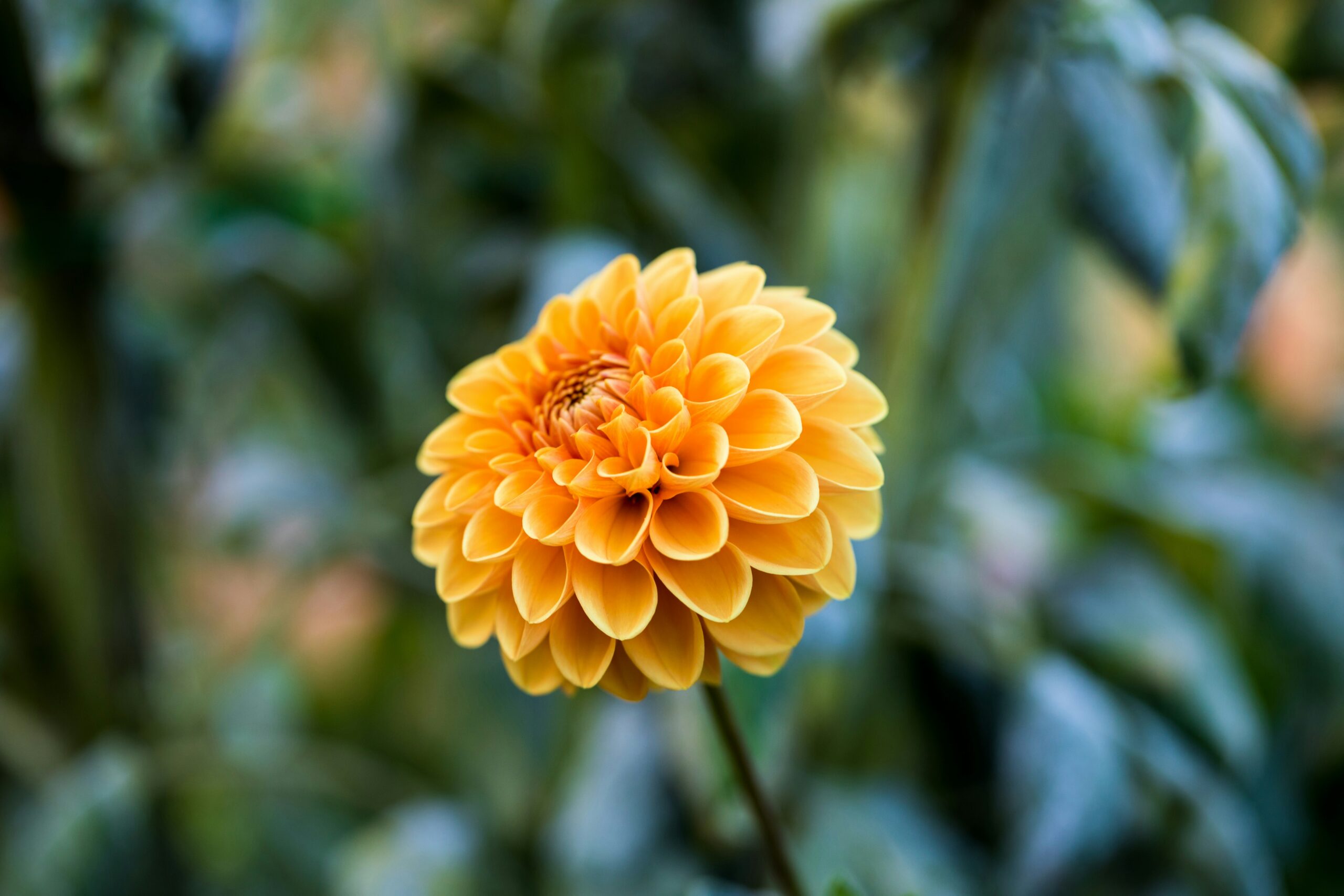Introduction to Flowers That Embody and Symbolise Longevity
Flowers are not just beautiful to look at—they are also powerful symbols and natural allies in the pursuit of healthy aging and vitality. Celebrated in traditional medicine, and similarly many cultural rituals, and has been for centuries. These flowers go beyond ornamental value. But when it comes to which flower represents longevity, the Yellow Chrysanthemum stands out as the answer to the question. It is one of the most significant—a flower that deeply woven into the fabric of Eastern symbolism, but what’s more, medicine itself. Chrysanthemums for example, affectionately called “mums” are more than just pretty fall flowers. In Chinese, Japanese, and Korean cultures, they are a powerful symbol of long life, together with resilience and renewal. They contain potent antioxidants and phytochemicals that in this case may play a role in protecting cells from aging. These features boost immune function, and also support vision and cardiovascular health. But which flower represents longevity?
What Exactly Makes the Yellow Chrysanthemum THE “Longevity Flower”?
The Yellow Chrysanthemum earns its title as the “Longevity Flower” through a powerful combination of cultural reverence, healing properties, and scientifically recognized bioactive compounds that can also support healthy aging.
1. Centuries of Traditional Use
Traditional Chinese Medicine (TCM) suggests the Yellow Chrysanthemum (Chrysanthemum Morifolium) cools the body, clears the liver, improves vision, and in addition calms internal heat. All these things are also associated with maintaining balance and extending life. The flower has been consumed for centuries, in the form of herbal teas, and supports long-term wellness and prevents disease.
2. Rich in Antioxidants
The flower contains potent antioxidants like luteolin, apigenin, and chlorogenic acid, which help for instance in neutralizing free radicals—unstable molecules that damage cells and accelerate aging. By reducing oxidative stress, these compounds may further protect the body from premature aging. It may al inflammation, and chronic diseases like heart disease and neurodegeneration.
3. Anti-Inflammatory and Immune-Regulating Properties
Yellow chrysanthemum shows natural anti-inflammatory properties. This helps reduce chronic, low-grade inflammation linked to aging. Its flavonoids and polyphenols also support immune function, potentially helping the body resist age-related decline.
4. Neuroprotective Potential
Emerging research suggests that compounds in the chrysanthemum may offer neuroprotective effects, which, can also aid in preserving memory and cognitive function as we age. This aligns with traditional uses of the flower to support mental clarity and calmness.
5. Detoxification and Eye Health
In TCM, detoxifing the liver and also nourishing the eyes uses the Chrysanthemum. Crucial effects for preserving vitality and health into older age.
Popular Types of Flowers Related to Longevity and Their Potential Healing Benefits
1. Chrysanthemum (Specifically the Yellow Chrysanthemum)
Symbolism: Long life, resilience, and grace in aging
Benefits: Rich in flavonoids and potassium, in addition it has been shown to reduce inflammation, improve circulation, and protect against oxidative stress. Often consumed as a tea in Traditional Chinese Medicine. Yellow Chrysanthemum supports eye health, heart function, improved circulation, and overall detoxification, therefore making it a natural ally in the pursuit of longevity flower.
2. Lotus
Symbolism: Rebirth, spiritual purity, and eternal life
Benefits: The seeds and petals are used in traditional medicine for calming the nerves, and secondly improving skin health, and thirdly promoting cellular repair.
Contains alkaloids and polyphenols with anti-aging and liver-supportive properties.
3. Peony
Symbolism: Prosperity, honor, and longevity
Benefits: Peony root is widely used in Chinese medicine for its anti-inflammatory and also it’s hormone-balancing effects.
Shown to help with autoimmune regulation and skin rejuvenation.
4. Calendula
Symbolism: Healing, protection, and endurance
Benefits: Packed with carotenoids and flavonoids, calendula is also often used in topical applications for anti-aging and skin regeneration.
Anti-inflammatory and wound-healing effects support aging skin.
5. Plum Blossom
Symbolism: Endurance, resilience in adversity
Benefits: While not commonly used medicinally, it is deeply symbolic of strength during aging and seasonal change.
Curing fatigue and skin care, antioxidant-rich extracts involves research by top institutions.
The Science Behind the Longevity Flower Yellow Chrysanthemum
The Chrysanthemum isn’t just a symbol of long life—it’s an evidenced treatment for supporting health. Potentially slowing down the aging process slightly according to Traditional Chinese Medicine. Let’s explore the science that makes this flower stand out in the world of natural longevity support and why it therefore represents the longevity flower.
1. Rich in Antioxidants
The Chrysanthemum is packed with flavonoids, phenolic acids, and carotenoids—natural compounds known for their antioxidant activity. These antioxidants help combat oxidative stress, which occurs when free radicals damage cells over time, accelerating the aging process.
Key antioxidants found in yellow chrysanthemum:
- Luteolin – may help protect against neurodegeneration.
- Apigenin – known for its anti-inflammatory and anti-cancer effects.
- Chlorogenic acid – supports metabolism and cardiovascular health.
2. Neuroprotective and Cognitive Benefits
Certain bioactive in chrysanthemum have show potential in protecting the nervous system, and in addition improving brain function. Research suggests that these compounds may help:
- Reduce inflammation in brain tissues
- Prevent neuron damage
- Support memory and cognitive clarity
These findings align with traditional beliefs that chrysanthemum tea helps clear the head and brighten the eyes, both metaphorically and biologically.
3. Cardiovascular Support
Yellow chrysanthemum may promote heart health by helping:
- Lower blood pressure
- Improve circulation
- Reduce bad cholesterol (LDL) levels
This cardiovascular support is crucial for longevity, because heart-related conditions remain one of the leading causes of age-related mortality.
4. Cellular Protection and Anti-Aging Pathways
Emerging studies have begun to examine how yellow chrysanthemum extracts may also influence:
- Senescence pathways (slowing down the process of cells entering a “non-functioning” state)
- Autophagy (the body’s process of cleaning out damaged cells)
- Liver detoxification (important for clearing age-accelerating toxins)
These mechanisms are central to maintaining longevity at the cellular level.
How might the Longevity Flower (Yellow Chrysanthemum) be Used in Modern Health Science
As interest in natural solutions for healthy aging continues to grow, the yellow chrysanthemum is stepping into the spotlight—not just as a symbol of long life, but as a scientifically relevant botanical in the fight against aging.
From Tradition to Clinical Research
Used for centuries in Traditional Chinese Medicine, the Chrysanthemum has been known for its ability to cool inflammation, which in turn boosts eye health, and detoxifies the liver. Meanwhile, modern researchers are beginning to investigate its bioactive compounds—including luteolin, chlorogenic acid, and apigenin—for their potential in age-related disease prevention.
Emerging Areas of Scientific Interest
1. Cellular Aging & Senescence
Studies explore how chrysanthemum extracts may modulate cellular stress responses, protecting against DNA damage, and then how that slows the accumulation of senescent (non-functional) cells—a hallmark of aging.
2. Neurodegenerative Disease Prevention
With anti-inflammatory and neuroprotective properties, the Yellow Chrysanthemum is being studied as a natural candidate for supporting cognitive function, further helping delay or prevent conditions like Alzheimer’s and dementia.
3. Skin Health & Anti-Aging Topicals
The flower’s antioxidant-rich profile makes it a valuable ingredient in cosmeceuticals aimed at reducing wrinkles, enhancing skin elasticity, and protecting against UV-related aging.
4. Immune Support & Longevity Pathways
Research is also investigating how yellow chrysanthemum may influence immune-regulating pathways such as NF-κB and Nrf2, which are deeply linked to inflammation, oxidative stress, and longevity.
Conclusion
You wanted to know, which flower represents longevity? The Yellow Chrysanthemum isn’t just a symbol of longevity—it’s a scientifically supported alternative treatment with real health benefits. As we continue to explore the power of nature in extending health span, the Yellow Chrysanthemum stands out as a remarkable example of how tradition and science can harmoniously meet offering not just hope but real, evidence-based potential in the journey toward longevity and vitality.

